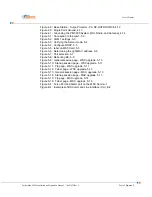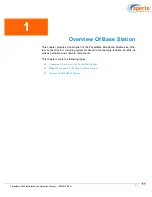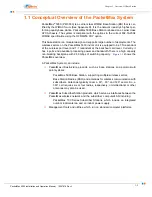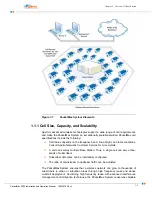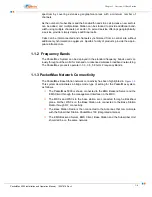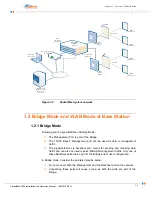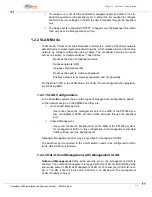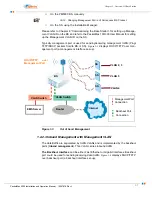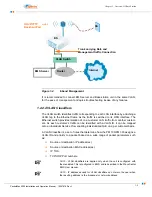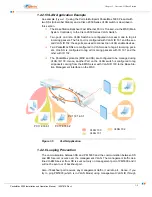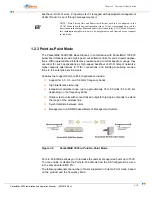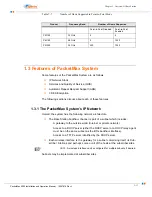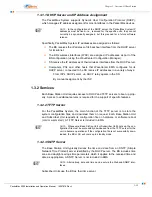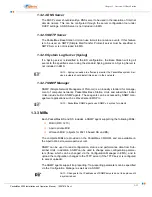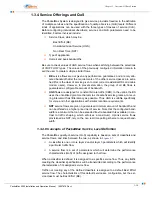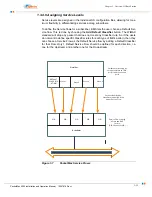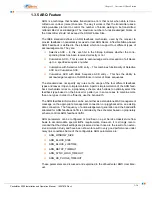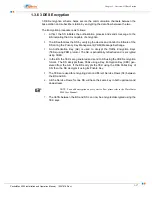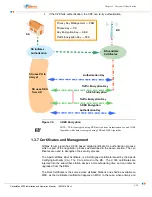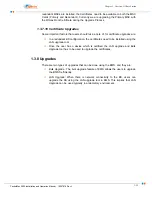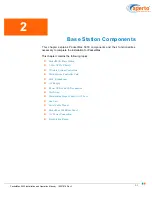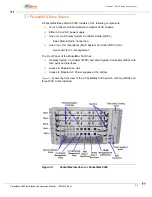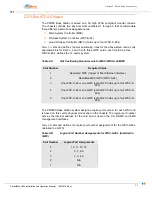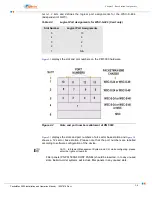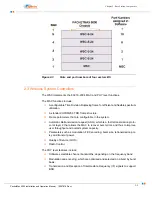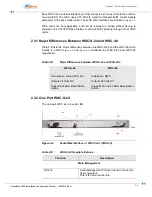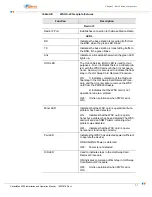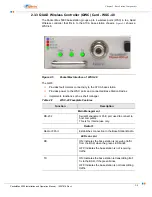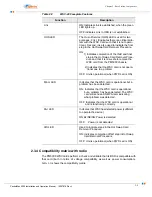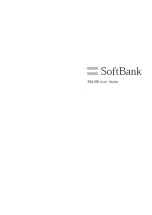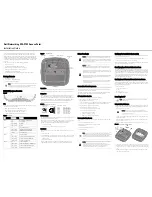
1–14
PacketMax 5000 Installation and Operation Manual, 10007678 Rev J
Chapter 1. Overview Of Base Station
1.3.4 Service Offerings and QoS
The PacketMax System is designed to give service providers freedom in the definition
of multiple services and the specification of quality-of-service (QoS) levels. Different
kinds of applications can be used with the three types of classes of service (CoS).
Before configuring individual subscribers, services and QoS parameters need to be
identified. Factors involved include:
Service Class, which may be:
-
Best Effort (BE)
-
Unsolicited Grant Service (UGS)
-
Non Real Time (NRT)
Type of application
Overall and peak bandwidths
Be sure to check values of UGS service flows when switching between the selections
of VOIP FLOW types. The values of the previously configured information remain to
aid the user to create multiple, similar flows.
BE
service flows are not given any performance guarantees, and are only allo-
cated bandwidth after the requirements of the other service classes are satis-
fied (this is the class of service given to most current residential DSL and cable
modem users). However, to prevent starvation, the group of all BE flows is
guaranteed a configurable amount of bandwidth
UGS
flows are designed for constant bit rate traffic (CBR). In the uplink, the BS
uses the unsolicited grant mechanism to schedule fixed-size grants at a recur-
ring interval with as little latency as possible. Thus, UGS is suitable specifically
for voice and other applications with similar real-time requirements.
NRT
service flows are given a guaranteed minimum amount of bandwidth, and
can be offered as a higher-priced tier of service. Note that the configured band-
width is a minimum that can be exceeded if extra bandwidth is available (in con-
trast to traffic shaping, which enforces a maximum). Uplink service flows
provisioned as NRT, rely on the non real time polling scheme to request band-
width.
1.3.4.8 Concepts of PacketMax Service Level Definition
The PacketMax quality-of-service (QoS) capability is based on sets of classifiers and
service flows, and links between the two, as shown in
.
A classifier is one or more layer 2 and/or layer 3 parameters which will identify
a particular traffic flow.
A service flow is a set of parameters which will determine the performance
characteristics (QoS) of traffic assigned to that flow.
When a classifier is defined, it is assigned to a specific service flow. Thus, any traffic
meeting the classifier specifications will be transmitted according to the performance
characteristics of its assigned service flow.
Traffic not meeting any of the defined classifiers is assigned to a default Best Effort
service flow. The characteristics of this default service are configurable, but the ser-
vice class must be Best Effort (BE).
Summary of Contents for PacketMAX 5000
Page 10: ...Preface Preface vi PacketMax 5000 Installation and Operation Manual 10007678 Rev J ...
Page 14: ...Table Of Content TOC 4 PacketMax 5000 Installation and Operation Manual 10007678 Rev J ...
Page 146: ...E 4 PacketMax 5000 Installation and Operation Manual 10007678 Rev J Chapter E Certifications ...
Page 150: ...F 4 PacketMax 5000 Installation and Operation Manual 10007678 Rev J Chapter F Troubleshooting ...

